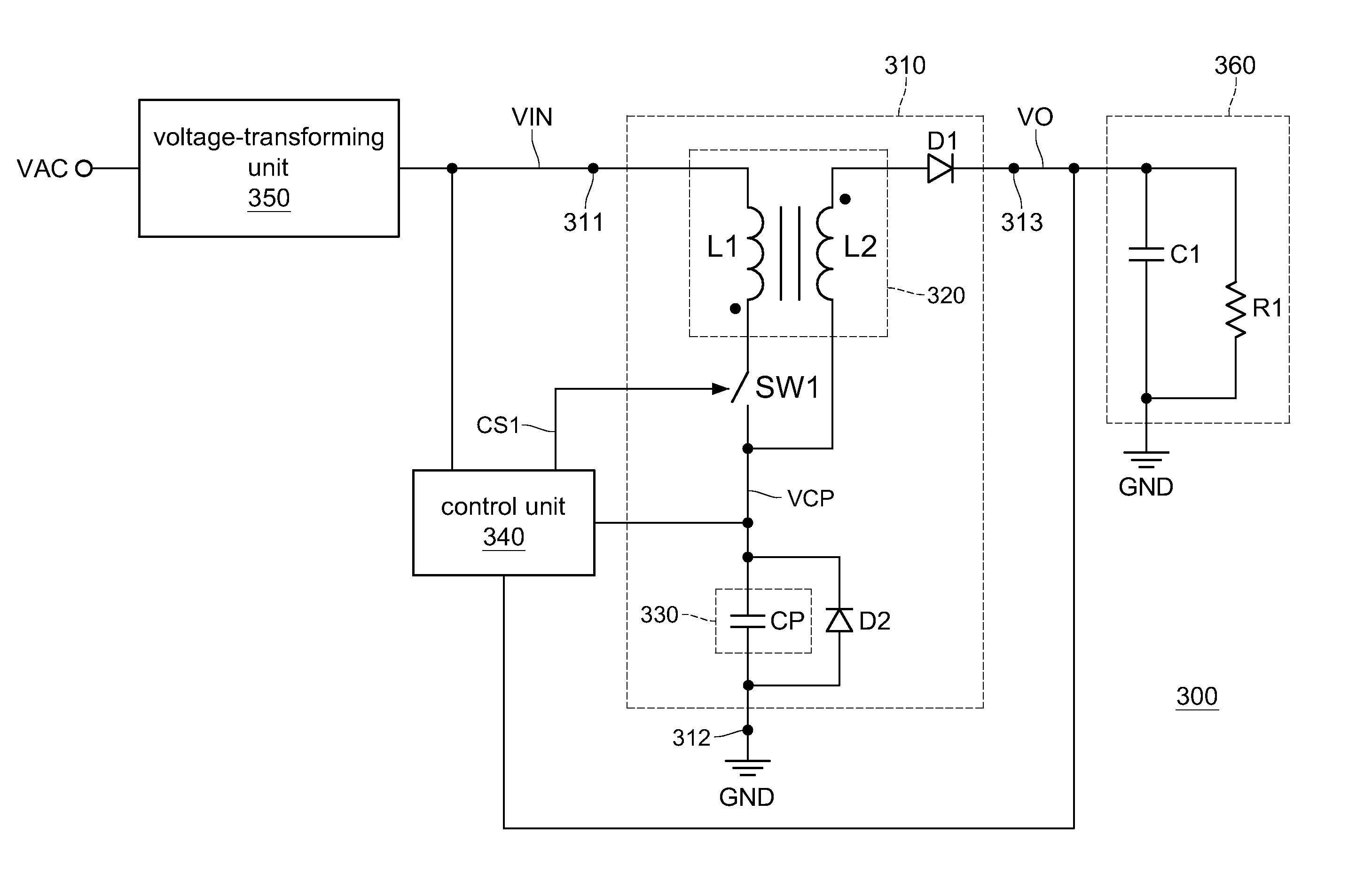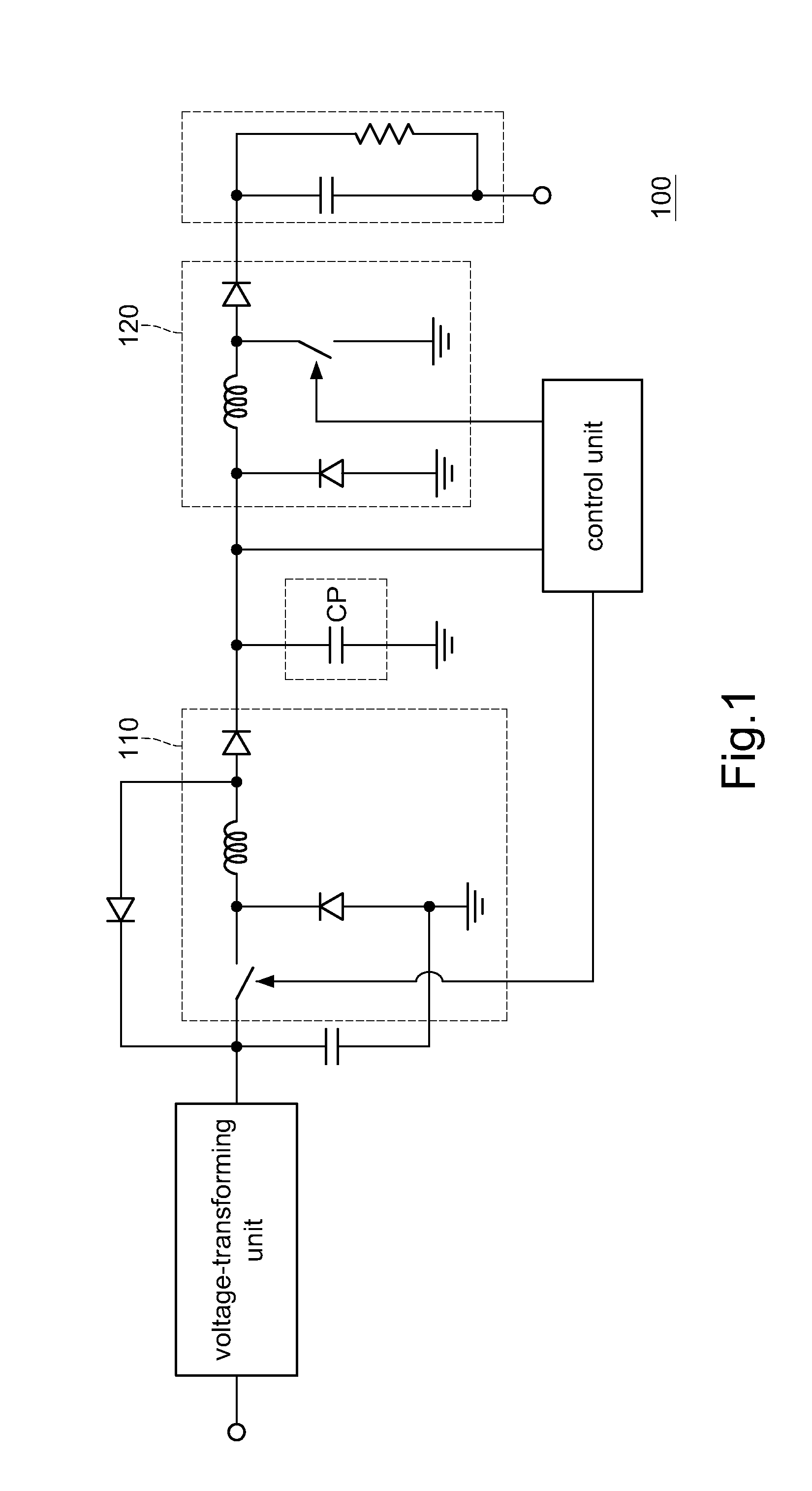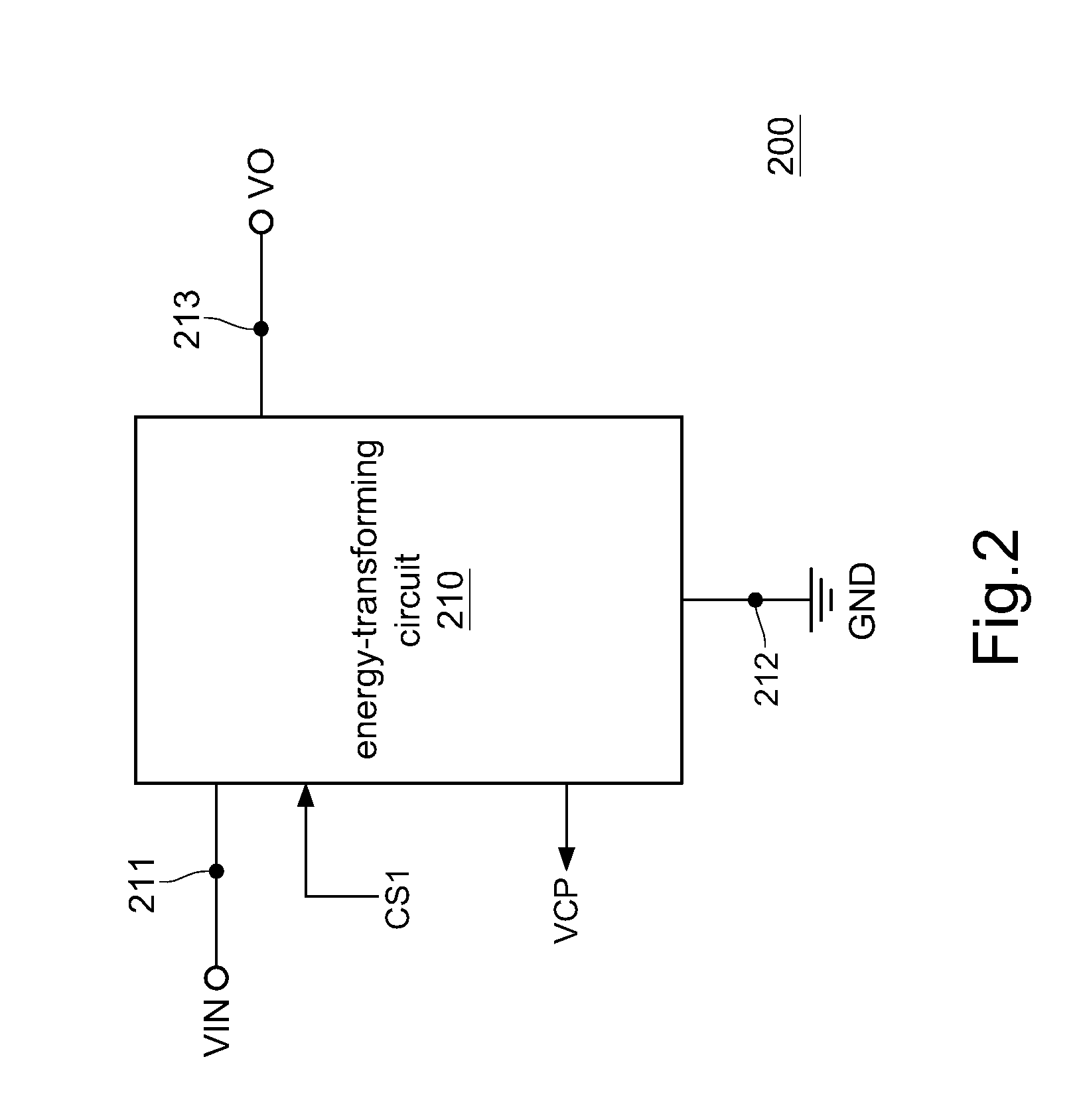Common-core power factor correction resonant converter
- Summary
- Abstract
- Description
- Claims
- Application Information
AI Technical Summary
Benefits of technology
Problems solved by technology
Method used
Image
Examples
Embodiment Construction
[0018]FIG. 2 is a circuitry diagram of a common-core power factor correction resonant converter of the present disclosure. FIG. 3 is an embodiment of the detailed circuit diagram of the common-core power factor correction resonant converter in FIG. 2.
[0019]Referring to FIG. 2, the common-core power factor correction resonant converter 200 may be referred as a coupling-inductor power factor correction resonant converter. The common-core power factor correction resonant converter 200 includes an energy-transforming circuit 210.
[0020]The energy-transforming circuit 210 includes a first terminal 211, a second terminal 212, and a third terminal 213. The first terminal 211 of the energy-transforming circuit 210 receives an input line voltage VIN, the second terminal 212 of the energy-transforming circuit 210 is coupled to a ground GND, and the third terminal 213 of the energy-transforming circuit 210 generates an output power VO.
[0021]Furthermore, the energy-transforming circuit 210 inclu...
PUM
 Login to View More
Login to View More Abstract
Description
Claims
Application Information
 Login to View More
Login to View More - Generate Ideas
- Intellectual Property
- Life Sciences
- Materials
- Tech Scout
- Unparalleled Data Quality
- Higher Quality Content
- 60% Fewer Hallucinations
Browse by: Latest US Patents, China's latest patents, Technical Efficacy Thesaurus, Application Domain, Technology Topic, Popular Technical Reports.
© 2025 PatSnap. All rights reserved.Legal|Privacy policy|Modern Slavery Act Transparency Statement|Sitemap|About US| Contact US: help@patsnap.com



